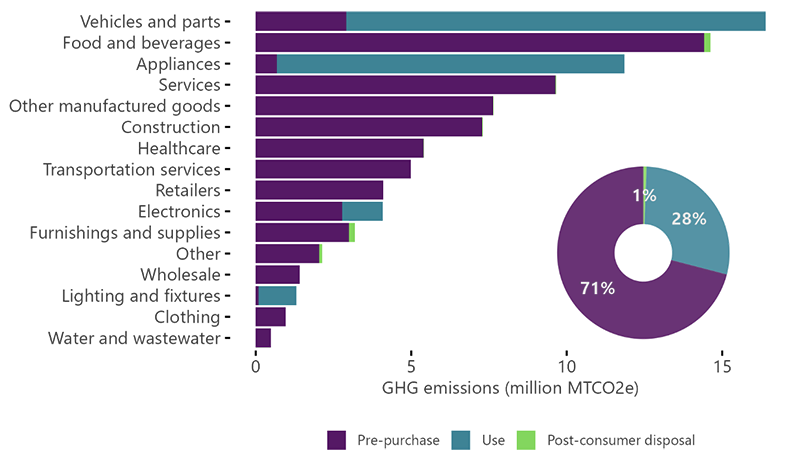Oregon's Consumption-based Emissions
Oregon’s consumption-based emission inventory measures greenhouse gas emissions produced around the world due to the state's consumption of goods and services like cars, food, fuels, appliances and clothing—which may be produced abroad, in neighboring states, or within the boundaries of Oregon. The relationship between the purchases we make and the subsequent emissions generated is important because GHGs do not recognize borders. Excessive emissions, whether they arise in Salem or Senegal, result in harm to the people of Oregon.
The consumption-based inventory complements and expands DEQ's sector-based inventory by accounting for total emissions from producing, using and disposing of a product, regardless of where it was produced.

Image courtesy of the City of Portland.
HB3409 (2023) Legislative Report on Opportunities to Reduce Consumption-Based Emissions
In 2023, House Bill 3409 established a legislative mandate for DEQ to evaluate greater opportunities to reduce consumption-based emissions in the form of a legislative report. This report evaluates Oregon's greenhouse gas emissions through:
- Summarizing and projecting the results from Oregon's 2021 consumption-based emissions inventory.
- Evaluating the effects of consumption-based greenhouse gas emissions reductions, while taking into account economic, social, and environmental factors.
- Recommending key actions that the State of Oregon can implement to achieve meaningful reductions in emissions.
Consumption-based accounting methods bring with them the potential for greater opportunities to reduce GHG emissions, while contributing positive co-benefits to the lives of the people of Oregon. For more information, please review the full legislative report and its supporting companion documents listed below.
HB3409 2024
Legislative Report and Companion Documents:

The consumption-based greenhouse gas emissions inventory tracks emissions produced in Oregon and around the world due to the products and services Oregonians consume. This inventory also accounts for the phase in which those emissions occur, indicating the volume of emissions per category created before purchasing, during use, and after disposal.